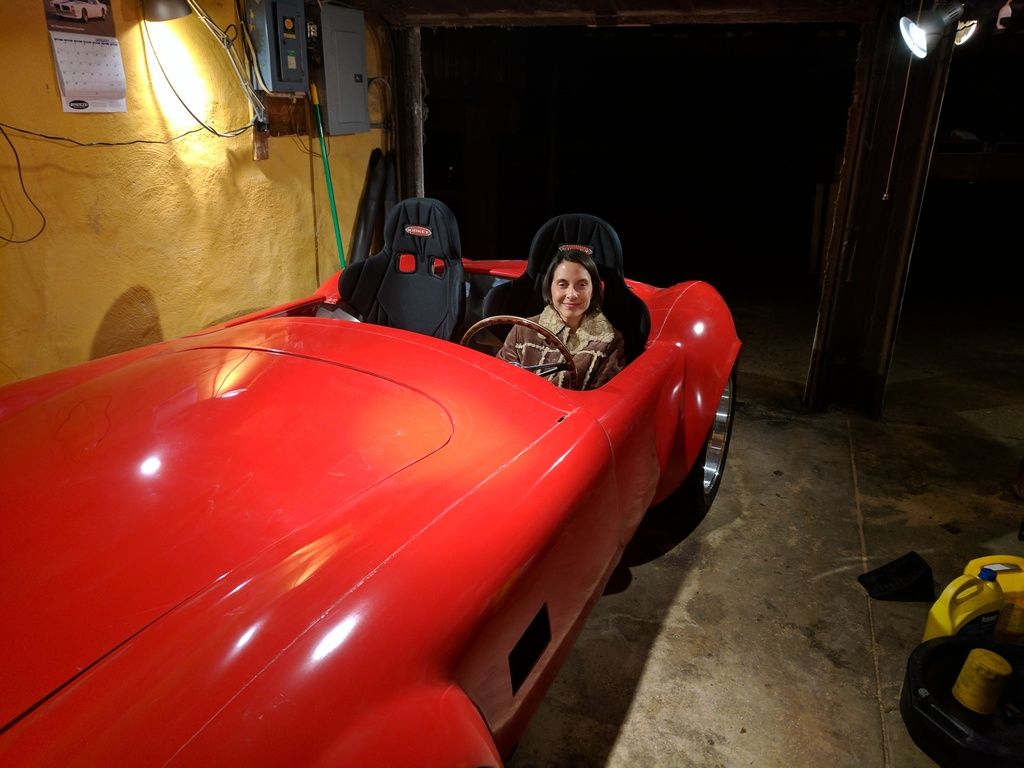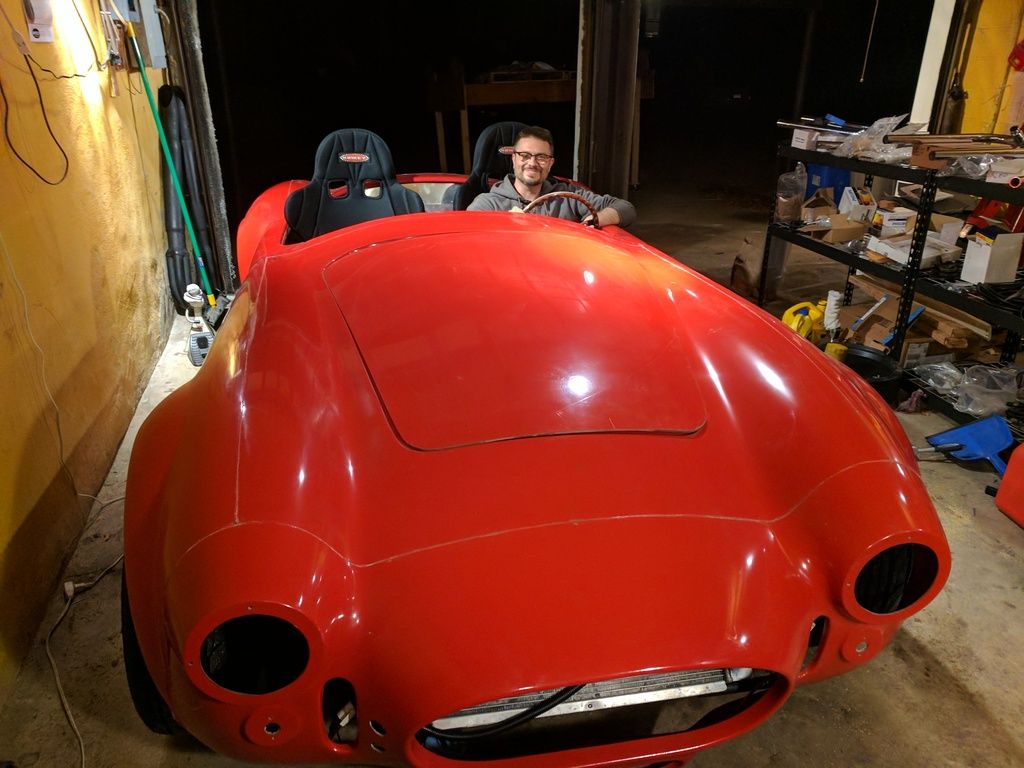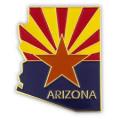Hey folks,
So I decided to pop the body on so that I could figure where to mount my seats. I have read that having the body on is a must when mounting the Kirkey high-backs. I am glad I did. The problem is that the seat is a little too low for me. I know that the slider will raise it up a tad, but that probably won't be enough for my wife. (Yes she will be driving it. That was part of the deal when I got the kit. And yes we will be going to an autocross for her to learn how to control it first.)
I have seen some solutions that raise the seat up, but not with the sliders. Any ideas or input before I dive in? Here are some pictures:

- Home
- Latest Posts!
- Forums
- Blogs
- Vendors
- Forms
-
Links

- Welcomes and Introductions
- Roadster
- Type 65 Coupe
- 33 Hot Rod
- GTM Supercar
- 818
- Challenge Series
- 289 USRCC
- Coyote R&D
- Ask a Factory Five Tech
- Tech Updates
- General Discussions
- Off Topic Discussions
- Eastern Region
- Central Region
- Mountain Region
- Pacific Region
- Canadian Discussions
- Want to buy
- For Sale
- Pay it forward
-
Gallery

- Wiki-Build-Tech



 Thanks:
Thanks:  Likes:
Likes: 



 Reply With Quote
Reply With Quote



 ) and will allow a lot of upper body movement.
) and will allow a lot of upper body movement.

